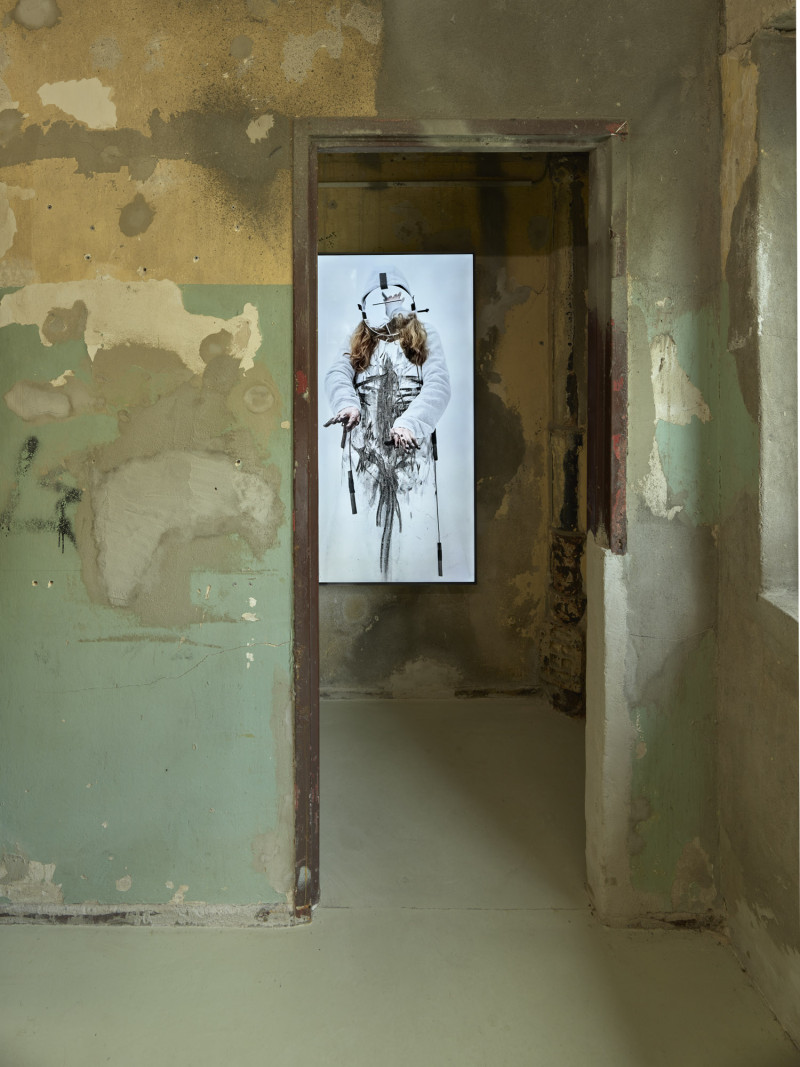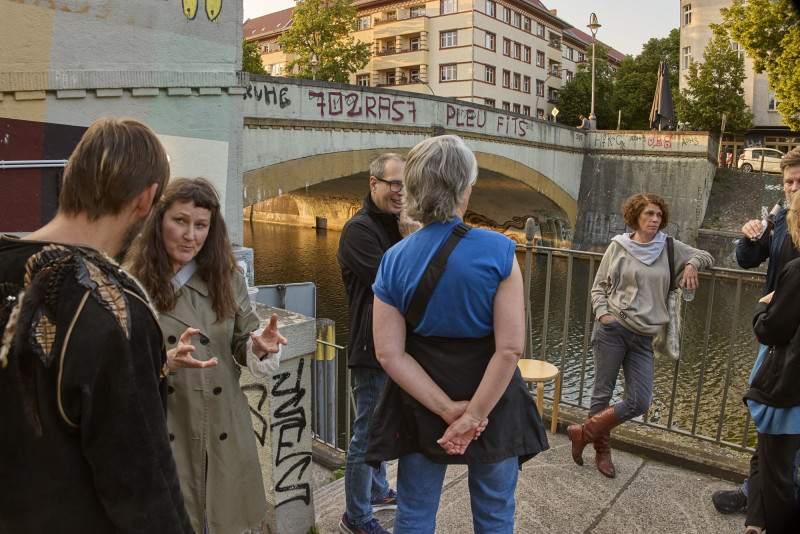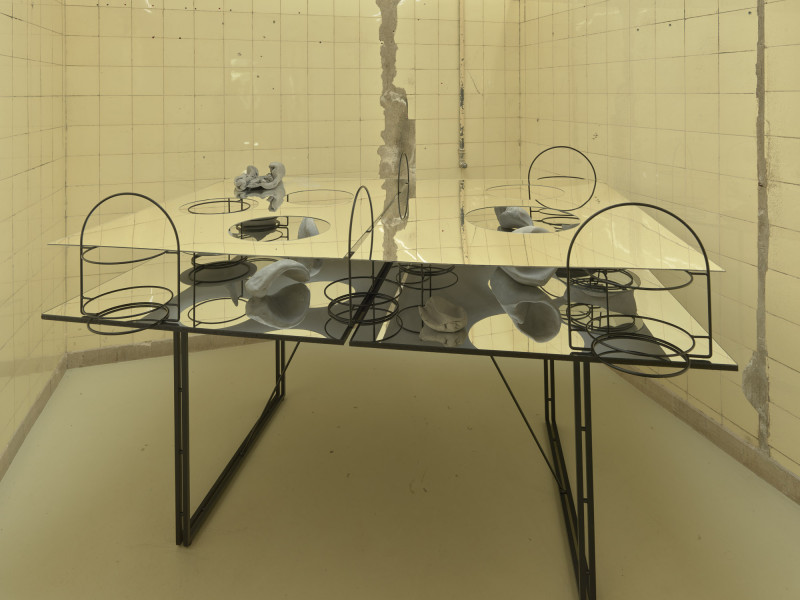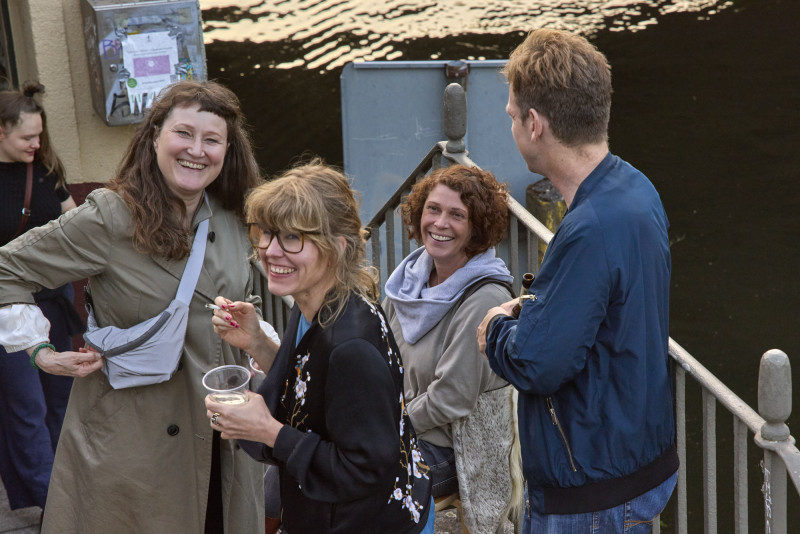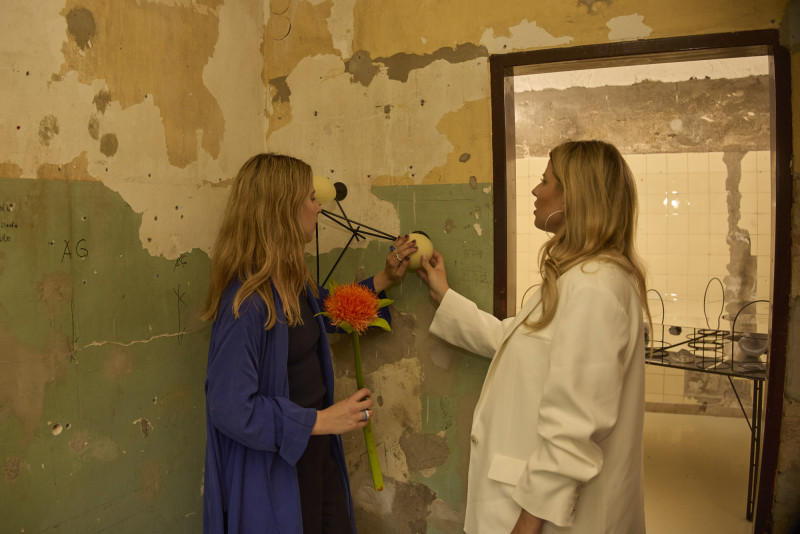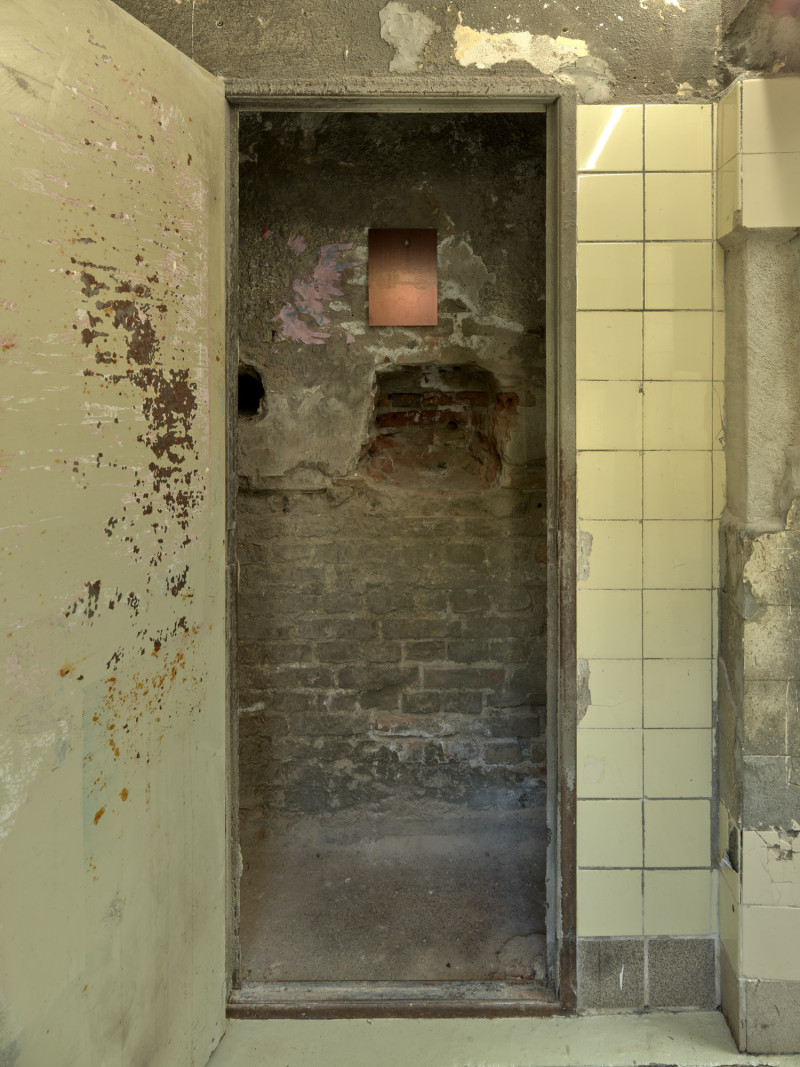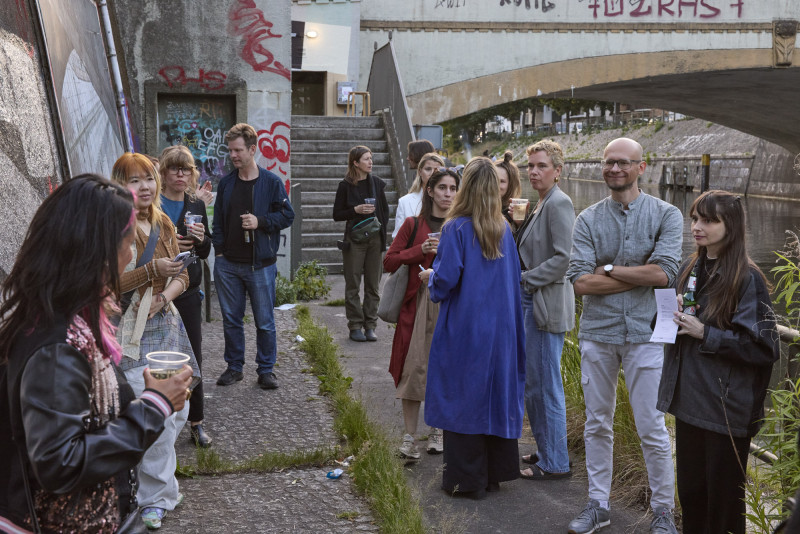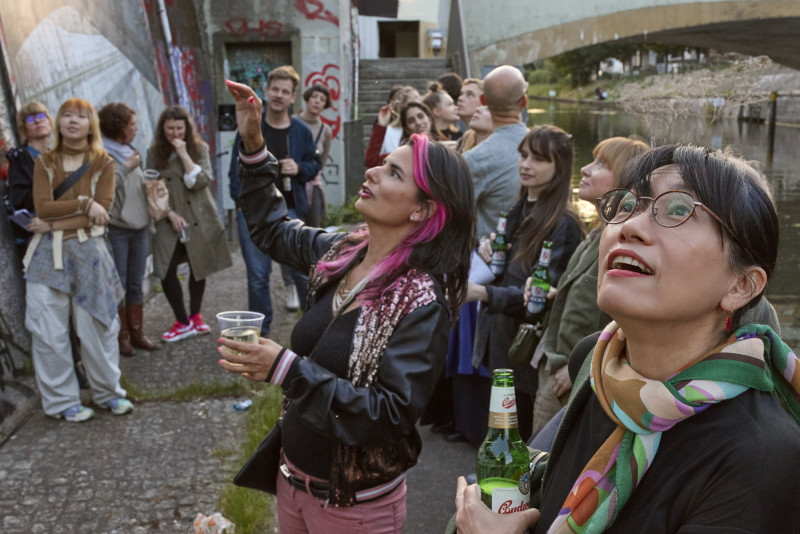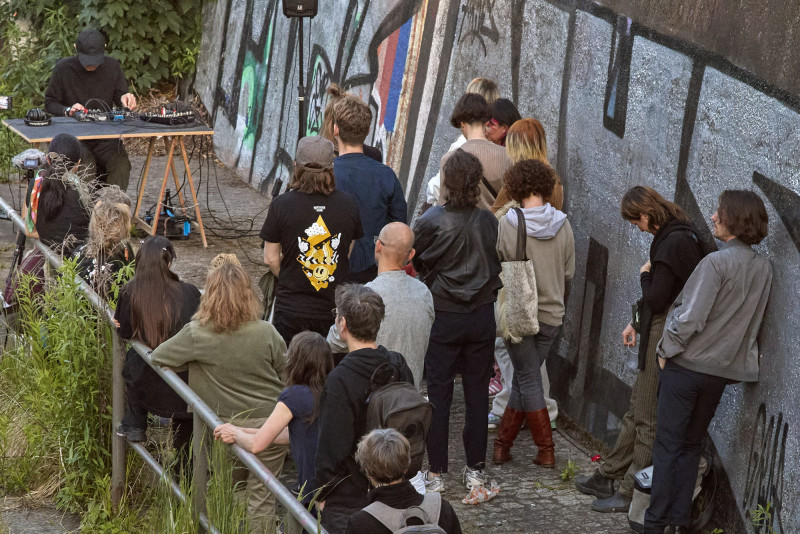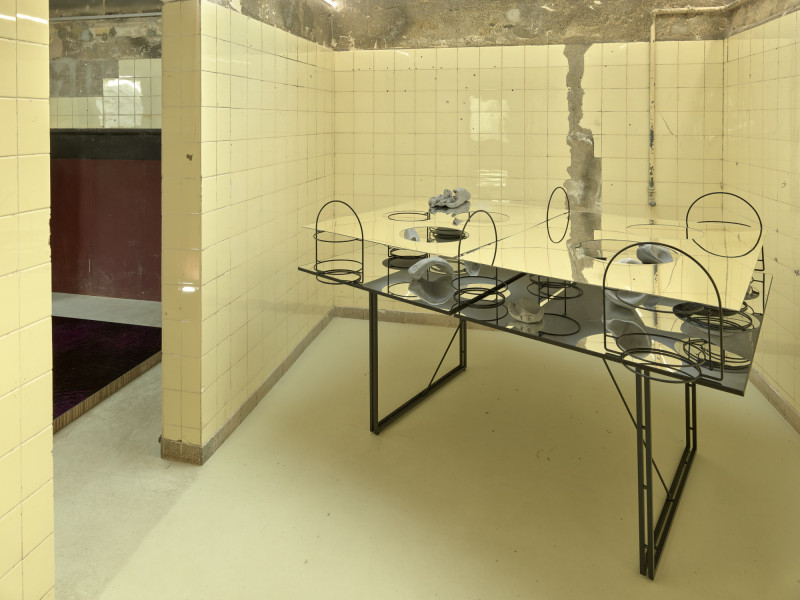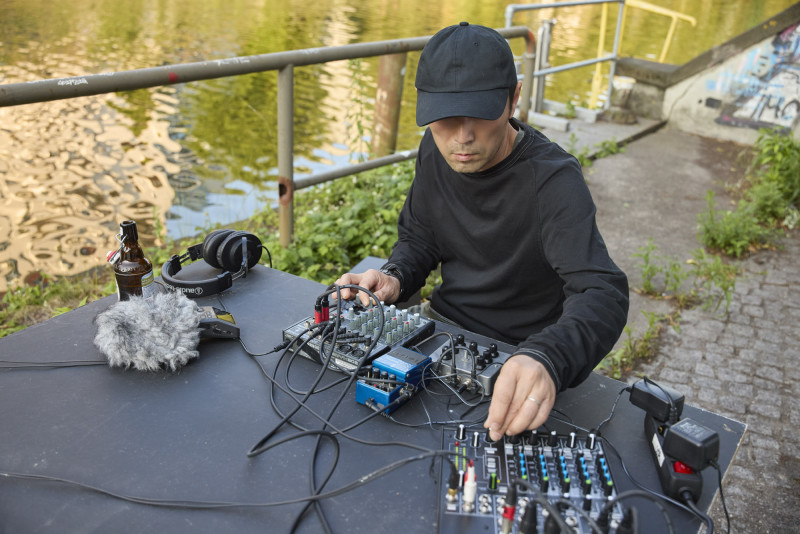Earth’s Shadow, Moon’s Crust is an insightful exhibition, which delves into humanity’s enduring fascination with the moon, reflecting our deep-seated desire to reach beyond our terrestrial confines and understand celestial bodies. The exhibition posits that our journey to understand the moon commences right here on Earth, the starting point from which all celestial endeavors spring.
It suggests that our celestial curiosity begins here on Earth, from a grounded vision point rooted in the presence of flora, fauna, stone, water, and within the breath and internal landscape of our very human bodies.
Through careful observation, humans have studied the moon, capturing the myriad reflections of the cosmos displayed on its surface, as well as interpreting our own psychological and emotional reflections cast upon it. This bidirectional reflection not only bridges outer space with inner sentiment but also underscores the moon as a canvas for human curiosity and conjecture.
In doing so, the moon becomes not only a mirror of the universe but also of ourselves—holding our projections, dreams, and questions.
In pursuit of this celestial understanding, the exhibition highlights how a specific vision point on Earth has been pivotal. By anchoring this point amidst familiar earthly surroundings—our natural world comprised of flora, fauna, stones, and waters—we forge a connection that roots our extraterrestrial explorations in the terrestrial. This grounding is crucial as it allows us to extend our reach mentally and imaginatively from the known to the unknown.
By anchoring itself in lunar phases and solstices, the exhibition weaves together planetary rhythms and human perception, proposing that in looking outward to the Moon, we uncover deeper truths about the Earth—and ourselves.
Earth’s Shadow, Moon’s Crust explores how, from this vision point, humans have embarked on a conceptual voyage to the moon, seeking to decode its mysteries. The exhibition carefully illustrates that in our quest to understand the moon’s mystical allure and geological makeup, we invariably employ Earth’s natural attributes as interpretative filters. These earthly elements not only enhance our understanding but also frame our perceptions, thus shaping the narrative of our lunar exploration.
Set beside the tranquil waters of the canal at Kunstbrücke am Wildenbruch, “Earth’s Shadow, Moon’s Crust” incorporates the fluid and reflective qualities of water into its narrative. Recent discoveries of water molecules and ice in permanently shadowed craters at the moon’s poles highlight a profound connection between Earth and its satellite. These findings underscore the potential for water to exist even in the harsh, airless lunar environment, fundamentally altering our understanding of the moon and its capacity to support future human missions.
Through a series of works by Alice Dittmar and Stella Geppert and a public programme including a sound performance by Seiji Morimoto, and a choreographed live piece by Stella Geppert with Lyllie Rouvière, the exhibition invites visitors to appreciate how deeply intertwined our planet is with our lunar aspirations. It suggests that our efforts to comprehend the moon can reveal as much about the Earth and ourselves as they do about our satellite companion. This interplay between Earth’s resources and lunar curiosity not only fuels our scientific inquiry but also enriches our cultural and philosophical perspectives.
- The public events will be synchronised with particular phases of the moon and the Earth.
Each phase will serve as a temporal anchor, linking the rhythms of celestial bodies to the human experience of time, place, and transformation.
Curatorial assistance: Diana Nowak


